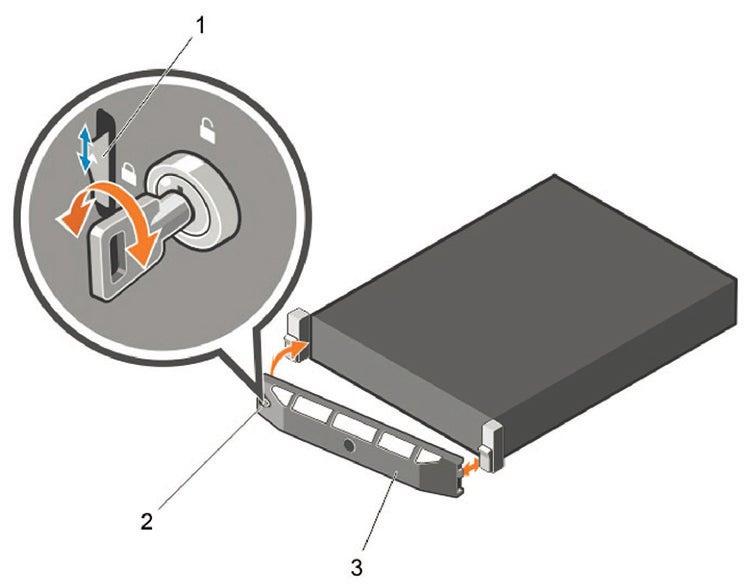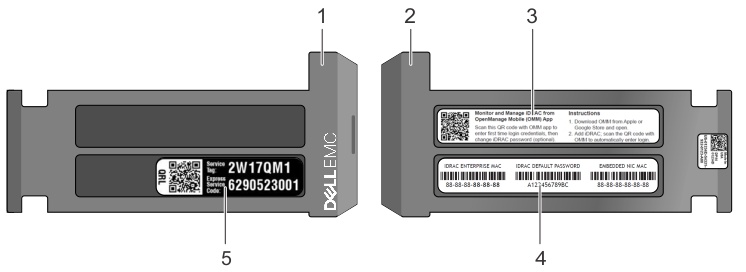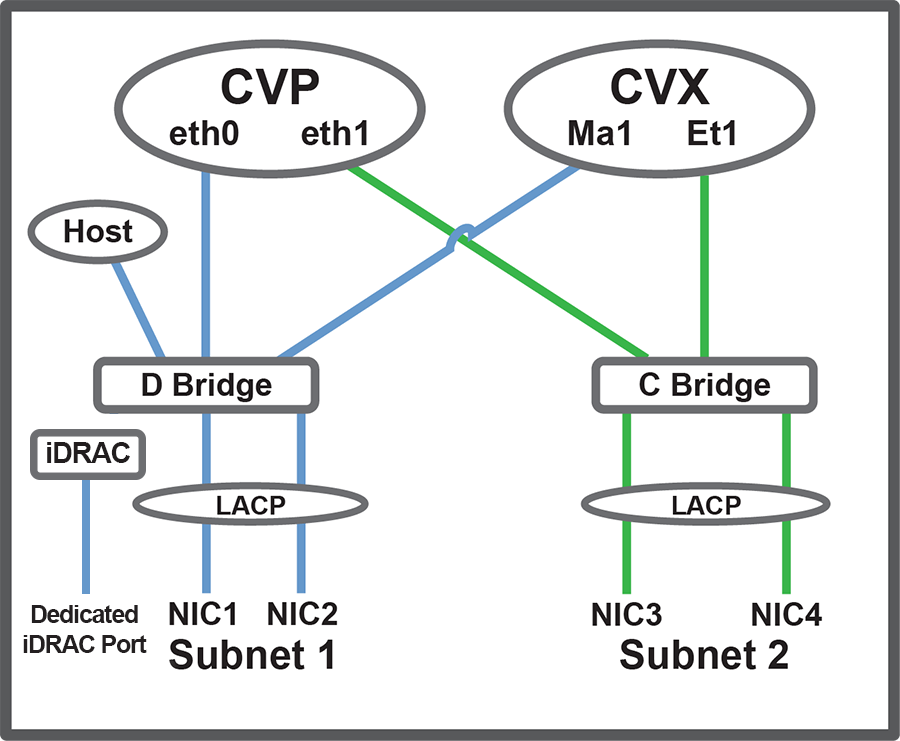Setup Preparation
Site Selection
Before you begin, read the safety instructions in your Safety, Environmental, and Regulatory Information booklet.
- Before you begin, review the safety instructions located at https://www.arista.com/en/support/product-documentation.
- Begin installing the rails in the allotted space closest to the bottom of the rack enclosure.
- Other Requirements: Select a site where liquids or objects cannot fall onto the equipment and foreign objects are not drawn into the ventilation holes. Verify these guidelines are met:
- Clearance areas to the front and rear panels allow for unrestricted cabling.
- All front and rear panel indicators can be easily read.
- Power cords can reach from the power outlet to the connector on the rear panel.
Receiving and Inspecting the Equipment
Upon receiving the appliance, inspect the shipping boxes and record any external damage. Retain packing materials if you suspect that part of the shipment is damaged; the carrier may need to inspect them.
If the boxes were not damaged in transit, unpack them carefully. Ensure you do not discard any accessories packaged in the same box as the main unit.
Inspect the packing list and confirm that you received all listed items. Compare the packing list with your purchase order.
Electrostatic Discharge (ESD) Precautions
- Assemble or disassemble equipment only in a static-free work area.
- A conductive work surface (such as an anti-static mat) dissipates static charge.
- Wear a conductive wrist strap to dissipate static charge accumulation.
- Minimize handling of assemblies and components.
- Keep replacement parts in their original static-free packaging.
- Remove all plastic, foam, vinyl, paper, and other static-generating materials from the work area.
- Select tools that do not create ESD.
Setting up Your System
- Unpack the system.
- Remove the I/O connector cover from the system connectors.
Note: While installing the system, ensure it is properly aligned with the slot on the enclosure to prevent damage to the system connectors.
- Install the system in the enclosure.
- Turn on the enclosure.
Note: Wait for the chassis to initialize before you press the power button.
- Press the power button on the system.
Alternatively, you can also turn on the system by using:
- The system iDRAC. For more information, see Web Access into iDRAC (System IPMI).
- The enclosure Chassis Management Controller (CMC), after the system iDRAC (IPMI) is configured on the CMC.
CloudVision Physical Appliance Setup
- Key to the system key-lock.
- #1 and #2 Phillips screwdriver.
- Wrist grounding strap connected to ground.
- Rack mount kit instructions are located in the shipping box.
Before Working Inside your System
- Turn off the system, including all attached peripherals.
- Disconnect the system from the electrical outlet and disconnect the peripherals.
- Remove the system cover.
Front Bezel
Complete the following tasks to remove the front bezel.

- Unlock the key lock at the left end of the bezel.
- Lift the release latch next to the key lock.
- Rotate the left end of the bezel away from the front panel.
- Unhook the right end of the bezel and pull the bezel away from the system.
Locate the MAC Addresses for the CloudVision Appliance
The information tag is a slide-out label that contains system information such as Service Tag, NIC, and MAC address for your reference. Record the MAC addresses in the CloudVision Worksheet.

| 1 | Information tag (front view) | 2 | Information tag (back view) | 3 | OpenManage Mobile (OMM) label |
| 4 | iDRAC MAC address and iDRAC secure password label | 5 | Service Tag |
Rear Panel Ethernet Connections
On the back panel of the CloudVision appliance, locate the Ethernet Integrated 10/100/1000 Mbps NIC connectors.


iDRAC is an Intelligent Platform Management Interface (IPMI) that provides a GUI-based out-of-band interface for monitoring the hardware appliance.
Record the IP address and Hostname information on the CloudVision Worksheet.
DNS Entries
- Each of the CloudVision Appliance host machines.
- Each of the CloudVision Appliance iDRAC interfaces.
- Each of the CloudVision Portal (CVP) nodes.
- Each of the CloudVision Server (CVX) nodes.
Contact your DNS zone administrator for assistance.
CloudVision Appliance IP Configuration
- Option 1: Using an available DHCP server
- DHCP-based IP Address Setup DHCP-Based IP Address Setup.
- Web Access into Host via iDRAC Web Access into iDRAC (System IPMI).
- Option 2: Manual configuration (Requires terminal connected to VGA port)
- Manual IP Address Setup Manual IP Address Setup.
- Web Access into Host via iDRAC Web Access into iDRAC (System IPMI).
DHCP-Based IP Address Setup
iDRAC IP Address
Using the iDRAC MAC from Locate the MAC Addresses for the CloudVision Appliance, input an entry into the DHCP Server for the corresponding iDRAC IP address mapping to that MAC.
Host IP Address
Using the HOST NIC1 MAC from Locate the MAC Addresses for the CloudVision Appliance, input an entry into the DHCP Server for the corresponding HOST IP address mapping to that MAC.
Turn the system on by pressing the power button located on the front of the system.
Manual IP Address Setup
iDRAC IP Address
The iDRAC IP address can be manually configured via the host's bash shell using the racadm tool.
The racadm commands below are sequence-dependent and must be entered in the following order.
- Log in as user “root” using the attached terminal and keyboard with the default password “arista.”
- Disable all iDRAC-related DHCP configurations.
racadm set iDRAC.IPv4.DHCPEnable 0 racadm set iDRAC.IPv4.DNSFromDHCP 0 racadm set iDRAC.NIC.DNSDomainFromDHCP 0 - Configure the IP network settings for the iDRAC interface.
racadm set iDRAC.NIC.Enable 1 racadm set iDRAC.IPv4.Address <iDRAC-IP> racadm set iDRAC.IPv4.Netmask <iDRAC-MASK> racadm set iDRAC.IPv4.Gateway <iDRAC-GW> - Configure the DNS settings for the iDRAC interface.
racadm set iDRAC.IPv4.DNS1 <iDRAC-DNS1> racadm set iDRAC.IPv4.DNS2 <iDRAC-DNS2> racadm set iDRAC.NIC.DNSRacName <iDRAC-NAME> racadm set iDRAC.NIC.DNSDomainName <iDRAC-DOMAIN.NAME> - Verify the configuration by running the following command.
racadm getSysInfo
Host IP Address
The host IP address can be manually configured using the host's bash shell. For the settings to be persistent, the following configuration must be completed.
- Configure the network settings by editing the /etc/sysconfig/network-scripts/ifcfg-devicebr file.
DEVICE=devicebr NAME=devicebr TYPE=Bridge ONBOOT=yes BOOTPROTO=none IPADDR=<ip address here> NETMASK=<subnet mask here> GATEWAY=<gateway ip address here> DELAY=0 USERCTL=yes NM_CONTROLLED=no - Configure the DNS settings by editing the /etc/resolv.conf file.
nameserver <dnsServerIP-1> nameserver <dnsServerIP-2> search <domain1> <domain2> - Restart the networking service so the changes take effect.
service network restart
